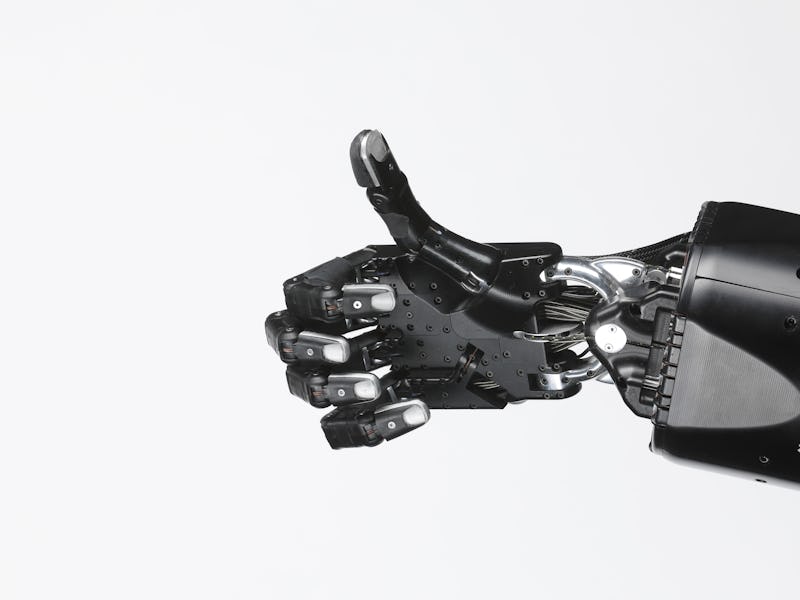This Wild Study Gave People An Extra Thumb — And Watched Them Thrive
A third thumb could change human capabilities drastically — but can we handle it mentally?

From the war machines in Edge of Tomorrow to the black market adaptation of Elysium to the classic power loader in Aliens, exoskeletons loom large in cinema. And they’re far from science fiction — with rudimentary rigs used for heavy loading tasks, in military applications, or for disabilities. But what we have in the real world versus what you see on the big screen is many levels down to simplicity. So how do we up the complexity of human-controlled robots? Extra thumbs might help.
Recent research, published on in Wednesday in Science Robotics, suggests humans can not only handle another opposable digit — they could thrive using it.
A user with a third thumb opens a bottle with ease.
A few years ago, a group of researchers at Cambridge University developed The Third Thumb — a prosthetic thumb that is controlled by a pressure sensor under the opposite side’s big toe or foot. In a new study, they tested the capability on a broad group over a five day period at the annual Royal Society Summer Science Exhibition.
The team enlisted 596 attendees of all ages, and from various backgrounds. These participants were asked to complete various tasks, such as moving pegs or foam objects. Almost everyone succeeded — only 13 participants could not perform a task using an extra limb, and half of those unable were under the age of 10. There were some individual differences in ability levels but no difference between genders. When breaking it down by age, the older adults age bracket showed a decline in performance with increasing age, which could just be related to that demographic’s decreased sensorimotor and cognitive abilities.
This study shows how different groups can relatively easily adapt to motor augmentation technology.
"Augmentation is about designing a new relationship with technology — creating something that extends beyond being merely a tool to becoming an extension of the body itself,” Dani Clode, one of the study’s authors, says in a press release. That’s good news for anyone looking to design, say a more complex exoskeleton.
The finding also could have implications for more virtual spaces — from spatial computing to virtual reality setups. This study suggests that it’s possible to expand human motor capabilities beyond the most useful opposable thumbs many are currently working with.
“Technology is changing our very definition of what it means to be human, with machines increasingly becoming a part of our everyday lives, and even our minds and bodies,” Professor Tamar Makin from the Medical Research Council (MRC) Cognition and Brain Sciences Unit at the University of Cambridge said in a press release.